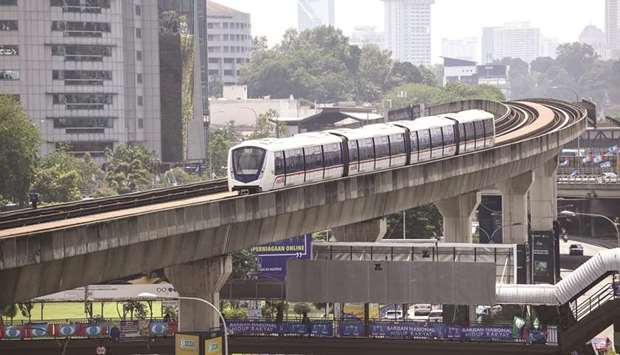The importance of such financing becomes clear given the problem that in many less-developed countries in Asia the lack of proper infrastructure is one of the major obstacles to development and economic growth. The use of cross-border financing and investment through Islamic finance can help to widen the investor base and lower the cost of financing for the development of infrastructure in Asia, the ADB said.
Looking back, more than ten Asian countries issued a total of $73.1bn in infrastructure sukuk between 2002 and the end of 2015, including Malaysia with 61% of the volume issued, followed by Saudi Arabia (30%) and the UAE (7%), countries which dominate the global market for infrastructure sukuk. Adding to that, Malaysia’s ongoing Economic Transformation Programme is expected to accelerate the issuance of Infrastructure sukuk in its aim to achieve the government’s economic and socio-economic targets for 2020.
In addition, China’s ambitious Asia-wide Belt and Road Initiative to recreate its ancient land and maritime silk roads for the modern era has created a massive business case for Islamic funding. Plans are to spend up to $3tn to build a system of roads, railways, bridges, sea ports, oil and gas facilities, power supply networks, industrial parks and other infrastructure to boost Chinese trade with Europe, Southeast and Central Asia, as well as Africa.
China-backed Asian Infrastructure Investment Bank has said that it will sort out Islamic finance vehicles including sukuk to fund some of the projects, while China through bilateral organisations is establishing links to Muslim countries to promote Islamic infrastructure finance. Among them, the UAE is one country that is strongly interesting to bring together Islamic finance and the new Silk Road initiative.
Moreover, the Philippine government has said that it is keen to promote Islamic finance vehicles to fund infrastructure projects in its southernmost province of Mindanao where about one fifth of the 25.5mn-population identifies themselves as Muslim and where infrastructure improvements are desperately needed. Infrastructure sukuk would be the first choice to fund projects for the Mindanao island group, officials of the provincial development agency said.
Indonesia is another country seeking to use sukuk for badly needed infrastructure improvements across its 17,000 islands, although it needs to upgrade its Islamic banking system first to attract respective investors.
Malaysia, in turn, has many examples of successfully funding infrastructure projects by sukuk. One of them is a cleverly designed investment product to finance a mass rapid transit (MRT) project in the Greater Kuala Lumpur area. The financing vehicle was created in 2015 as a combined exchange traded bond and sukuk at an issue size on 300mn ringgit ($73.2mn), and members of the public were able to purchase it via application forms or even automated teller machines of participating banks. Other directly funded sukuk issuances for the MRT followed, while ticket fares collected from the increased ridership of the MRT are being be used to pay sukuk holders their margin. This direct funding is part of Malaysia’s capital market masterplan to enable greater retail participation in the sukuk market.
Another Asian country that has used sukuk for infrastructure funding on the recent past is Kazakhstan which significant investment for exploration activities and the construction of infrastructure projects for its oil and gas industry, and more Central Asian countries are expected to follow.



